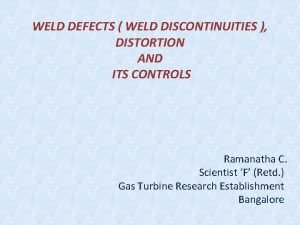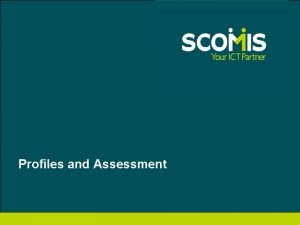Whats in a Place Place Profiles q Places









- Slides: 9



What’s in a Place? - Place Profiles q Places are defined by a combination of characteristics which change over time. q All places possess a number of characteristics or features which together make up a place profile. q A place profile is a description of a place based on the combination of the characteristics of that place. q It is possible to put these characteristics into categories. q Some of these categories over-lap, such as demography and socio-economic because as in the real world, there are lots of inter-connection amongst the different factors.


Other Factors influencing Place Profiles 1. Past and present connections – places do not exist in total isolation from the rest of the world. Over the time a place has existed it has been connected to other places. These connections can be seen as movements of people or trade for example. And these connections rarely stay the same for very long. Present day connections, such as journeys to work patterns, tend to be clearer to see. However, past connection can be seen in ethnic compositions pf a place’s population, an old building such as disused docks or in street names. § It is important to know that through its connections, a place is (or was) linked to places at different scales e. g. local scale links to places close, such as where students go to school or where people purchase everyday goods and services. § Regional connections can include journey’s to work or using a specialist health service in a very large hospital. § Beyond that, connections can be made with places nationally and internationally e. g. holidays abroad; food and clothing imported from abroad; news from around the country or world. § Scale is an important concept. You should try to analyse connections in terms of scale at which they operate.

Other Factors influencing Place Profiles 2. Shifting flows of people – as people make up of a place’s profile, changes to the people living in a place changes its profile. Migration brings people into a place but it also leads to others moving away. These flows of people can change the demography of a place. Stage in life cycle is an important influence on where people live and so influences places profiles. § One part of an urban area can receive an influx of young adults e. g. students or young professionals just starting out on their careers and living away from home. Many such areas are inner city areas. At retirement many people move away to smaller settlements e. g. rural or coastal regions. § In ACs due to improvement in transport, technology and communications, many people commute tot work and now live further away than was the case in the past. This changes the place profiles of where they lie and work. § Many smaller settlements are now within commuting distance and this has brought about significant changes to these places. § You should be clear in your answers at what scale the migrations you discuss are operating.

Other Factors influencing Place Profiles 3. Resources – these help to shape a place profile as places possess different natural resources. The local availability of a mineral resource for example can lead to the establishment of a community focused on mining that mineral. This is reflected in the human characteristics of that place. And if the resource runs out or is no longer required, the place undergoes change, although evidence of its previous profile persists, for example in buildings. § When a place no longer has the advantages a resource once gave it, its profile can soon become characterised by decline – this can be environmental, socio-economic, cultural or political. This leads to the need for regeneration and rebranding. § If a place gains access to a new resource then an upward spiral of development can occur. § Resources should be given a broad definition. Anything which humans can make use of can be included e. g. climate and heritage can be important resources for resorts.

Other Factors influencing Place Profiles 4. Money and investment –places require money to function. Flows of money and investment come and go, and this in turn brings about change to a place’s profile. § In all countries, governments are an important source of an investment to a place and governments can operate a t a variety of different scales – transnational e. g. UN or EU; national; regional; local. § Government spending on characteristics of places such as infrastructure, education, health and the environment can greatly influence place profiles. § Private flows are also significant from TNCs – substantial change can be ought to a place if a TNC invests in it or leaves. § When investigating the place profile of a place at a local scale, small scale investments from local investments can be significant. The opening or closing of a shop or an office in a local community can make a big difference to a local place. The growth of clone high streets or towns is one example of where the loss of local investment changes a place’s profile. § Clone high street is one dominated by high street chain stores and very few local , independent businesses survive.

Other Factors influencing Place Profiles 5. Ideas – because place profiles are so influenced by people, ideas can play a major role in making places what they are. In ACs, as both economy ad society have moved to a post industrial context, the service sector (knowledge economy) has been playing an increasing role in people’s lives. § Some places are able to participate fully in the knowledge economy and so they develop a distinctive place profile. Cities for example tend to be actively involved in the knowledge economy. Their places profiles suggest thriving, lively places. § Whereas places struggling to take advantage of the knowledge economy can have profiles suggesting stagnation and decline.

















